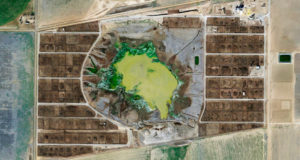Below is an article addressing a topic about which many people have curiosity. What are the standards of food containment materials and how may they differ from US or EU standards? Although there are a number of good provisions of safety and sanitary practices in-place, there are also shortcomings. Remaining in doubt are screenings for toxins from what many refer to as the most polluted region of food and dietary supplement exports.
CHEMLINKED by REACH24H
https://food.chemlinked.com/chempedia/china-food-contact-materials-regulation
The safety of food contact articles is a contentious issue and has received widespread attention. They are regulated in many countries because during contact with food, some hazardous substances can migrate from food packaging and containers to food products, with prolonged exposure causing risk to human health. Food contact contamination scandals have occurred frequently in China. In 2012, Liquor products, made by a reknowned Chinese Baijiu (rice liquor) manufacturer, contain excessive dibutyl phthalate (DBP). The media attention surrounding the occurrence caused widespread public panic. While this occurrence was unintentional as DBP confers no commercial benefit and actually thicken liquids whereas spirits need to be transparent and clear without precipitation, impurities or suspensions it highlighted a major shortcoming in regulatory supervision. Plasticizers may leak from PVC tubes or vessels used for storage or transportation as well as plastic caps. From this case, food manufacturers should not only pay attention to the containers of final products but the production equipment, transportation tubes, etc. Last year China banned the use of Bisphenol A (BPA) in the production of baby nursing bottles because the substance is understood to be an endocrine disruptor and experts say it could lead to the early sexual development of children and may also cause cancer. In brief, to ensure the safety of these food contact materials is of great importance to human health.
Part 1.The Definition of Food Contact Materials in China
Food contact materials (known as food containers and packaging materials in China) means those products made of paper, bamboo, wood, metals, porcelain, ceramics, plastics, rubber, natural fibers, synthetic fibers, glass and composite packaging materials that are intended to come into contact with foods or coatings in direct contact with food or additives. Food tools and devices, including machines, pipes, conveyer belts, containers, appliances, tableware and other objects that have direct contact with food or additives during production, distribution and use of food or additives, are all within the scope of FCMs.
Part 2.Current Main Competent Authorities in China
After the institutional reshuffle in March 2013, NHFPC (former MOH) is responsible for pre-market registration of food-related products (e.g. food contact materials, new food contact additives, etc.) and formulating and updating national food safety standards for those products. The AQSIQ and its local quality supervision departments are responsible for administration of production and processing of food-related products.
Part 3.Regulatory Framework for Food Contact Materials
The current regulatory framework for FCMs mainly consist of Food Safety Law 2009, hygienic standards for specific materials and their finished products and corresponding testing standards as well as GB 9685 for food contact additives, supplemented by a number of industrial standards, local standards and company standards. According to Article 36 and 62 of the Law, the purchase, use and importation of food-related products not complying with food safety standard are prohibited.
A series of hygienic standards for FCMs have been issued in China since 1980’s, such as GB 9691-1988 for polyethylene and GB 11680-1989 for paper. These hygienic standards describe organoleptic characteristics and set physical and chemical requirements, such as heavy metal migration limit, consumption of potassium permanganate, evaporation reside, etc. However, since most of them were released in 1980’s and 1990’s, they have been outdated and inadequate to meet current requirements. It is worth noting that there are two types of standards for some plastic, one for raw material and the other for finished product, which is much different to the similar regulations in EU and US. For example, GB 9691-1988 is the hygienic standard for polyethylene resin used in the manufacture of FCMs, while GB9687-1988 is the hygienic standard for polyethylene finished products used as FCMs.
There is also a raft of testing standards in line with hygienic standards. For instance, GB/T 5009.58-2003 is the corresponding testing standard for GB 9691-1988. But not every material, especially the newly developed one, has its own testing standard.
A specialist from a testing lab stated, the safety risks induced by different materials vary, for example, plastic and rubber products have the pose a potential risk of migration of their individual monomer components while processing acids; metallic materials, porcelains and ceramics may release heavy metal irons. Glass may release heavy metal irons and silica while the migration of some functional processing aids and sterilizing agents used during paper production is also a risk. Food may also easily get contaminated by ink painted on the packaging and containers. Most testing cases are related to plastic (including resin and moldings) and rubber products, followed by metals, glass, ceramics, porcelains and coatings. A few cases are about paper, composite packaging and plant fiber derivatives.
Click here to download the list of existing standards regarding food packaging materials
GB 9685
In 1994, in order to regulate the additive usage in FCMs, the Ministry of Health (MOH) and the Standardization Administration (SAC) jointly published the mandatory standard GB9685 “Hygienic Standards for Uses of Additives in Food Containers and Packaging Materials”, which was subsequently updated in 2003 and 2008. GB 9685-2008 specifies principles for uses of additives in FCMs, a positive list of 958 permitted additives, scope of use, maximum level, specific migration limit or maximum permitted quantity as well as other restrictive requirements.
However, industry has voiced serious concerns that there are many other food contact additives already in use in the Chinese market which have been approved for use in the EU & USA or have a history of safe use which have not yet been included in the standard. To improve this situation, in 2009, the clean-up work of food packaging materials was initiated to collect and assess FCMs additives that have a history of safe use among the various food enterprises but not included in the GB 9685-2008. As a result of this process, NHFPC (Former MOH) released two positive lists of food contact additives, including
- MOH Announcement 5 of 2013: 258 additives permitted to be used in FCMs
- MOH Announcement 5 of 2012: 301 additives permitted to be used in FCMs
At present, only additives covered by the GB 9685-2008, the above three positive lists and newly-approved by MOH (now NHFPC) can be used as food contact additives in China. Otherwise, they will be regarded as new food contact additives which need pre-market approval by NHFPC prior to use, according to the following two rules:
- Administrative Provisions on Licensing of New Varieties of Food-related Products
- Provisions on Application and Acceptance of New Varieties of Food-related Products
 Vitamin Agent The Health & Naturalistic Source
Vitamin Agent The Health & Naturalistic Source





